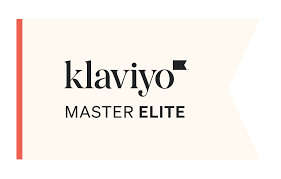Email marketing – Brand vs best practice design
We may be biased here but we are firmly of the opinion that email is one of the most powerful mediums for businesses to connect with their audience. However, a common dilemma often arises – should you prioritise brand aesthetics or adhere strictly to best-practice design principles?
Striking the right balance between these two aspects is crucial for a successful email campaign. So, let’s explore how finding the right balance can lead to increased engagement and conversion rates:
Your brand is your identity, and consistency across all communication channels, including emails, is paramount. Incorporating brand elements in your email campaigns helps in creating a cohesive and recognisable image in the minds of your audience. From using your brand colours and logo, to maintaining a consistent tone of voice, branding ensures that your subscribers can instantly associate the email with your company.
Visual identity:
Use your brand colours, fonts and logo consistently throughout your email design to ensure that your overall look and feel align with your brand’s visual identity to foster immediate recognition. Keep it in line with your website as much as possible, as this is, after all, where you want them to end up.
Brand voice:
Maintain a consistent tone of voice that reflects your brand personality. Write compelling, brand-aligned copy that resonates with your audience. Read our guide to copywriting for email for top tips on how to keep this simple and powerful.
While branding is crucial, adhering to best-practice design principles is equally essential for the success of your email campaigns. Best-practice design ensures that your emails are not only visually appealing but also functional, accessible, optimised for various devices, and, importantly, delivered to inboxes!
Deliverability:
Many of our clients come to us with beautiful brand-led emails, but wondering why they are not performing well. And much of the time it is because they are focusing purely on the branding and not best-practice design – they are using mostly images and not enough text or calls to action. This may enable the email to appear more ‘on brand’ but if you do not strike a good balance of image vs text, then it is likely that your emails will be marked as spam, and never actually reach your audience. This is why we always recommend using a templated approach to building your emails, and our results prove this works!
Mobile responsiveness:
It’s essential that emails are designed with mobile users in mind, after all an estimated 47% of people are regularly using their mobile device to access their emails. And those mobile designs need to be built to best practice guidelines in order to grab the readers attention on a much smaller screen.
Clear call to action:
So, you’ve built a gorgeous email campaign, which is completely wowing with how it reflects the brand. But what’s the point if it does nothing to actually drive people to your website and encourage them to convert? Your emails should contain clear, call to action buttons. Rule number one of ecommerce – don’t make your customers think! Tell them why they should take action and give them a clear means of doing so.
Clean layout:
Emails are a not the place for long rambling pieces of copy and busy designs. You have limited space in which to convince the reader that they should click through to your website, especially on mobiles. People are busy, so keep it simple and clear with a clean layout that doesn’t over-complicate things and overwhelm the reader. This will improve readability and engagement.
Finding the right balance:
1. Combine brand elements with design best practices to create visually appealing and functional emails.
2. Ensure your brand identity is maintained consistently throughout the customer journey without compromising the user experience
3. Test different designs to understand what resonates best with your audience
4. Analyse performance metrics and iterate based on the feedback and data gathered
Finding the right equilibrium between brand and best practice is the key to achieving success. Focus purely on brand and you risk losing commercial focus but focus purely on best practice design and you risk diluting the strength of your brand.
Your emails should be simple, on brand, with clean best practice design, accessible and optimised for user engagement. By striking this balance you can create email campaigns that not only captivate your audience visually but also drive the desired actions, ultimately leading to improved conversion rates and customer loyalty.
Need a bit more help or advice with these changes, or your email marketing in general? Get in touch.





